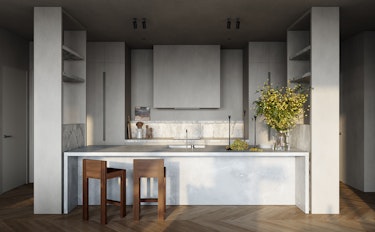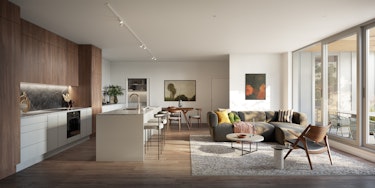Visualizing interior design requires meticulous execution. Your client will instantly label you as unqualified to do the job if your work isn't presented in a professional, easy-to-understand manner. As a result, you must always aim for perfection in every conceptual interior you show them.
In the field of interior design and visualization, there are many distinct types of clients. Certain people with a sense of style can appreciate good design when they see it. Others, on the other hand, do not. While each has advantages and disadvantages in terms of how they influence the design process and, eventually, the result remains constant with respect to the design proposal and execution. Here is a list of things to be kept in mind while preparing the interior renders for your client.

Start Observing
You'll need to start with real-life inspirations to achieve the most convincing, realistic architectural visualizations. Look for innovation and pragmatic ideas on how you want your composition, material palette, lighting, and other aspects of your work to appear in your work on Pinterest.
Accentuate the Human Experience
At the end of the day, you're handing over something to your client that will be used and occupied. There's a no better approach to persuade your clients of the value of your design than to demonstrate how the newly created area will be used on a daily basis. Incorporate interesting-looking individuals doing interesting-looking things into your interior visualizations. Your figures should blend in with the concept and quality of the environment you're creating, but you can be as imaginative as you like.
Light up the Imagery
The lighting in a 3D interior rendering is possibly the most difficult and important part to get right. If the shadows, lighting, or reflections are off in any way, it immediately draws the viewer's attention and distracts them from your attempt at reality. Refer to my initial point about looking at and analyzing real-life images and scenery for your interior rendering. Focus on how light, whether natural or artificial, shapes and forms. Interior lighting, I'm sure, is an important part of the design, thus exhibiting it may be a major attribute in proving the veracity of your imagery.
The Simpler, The Better
If there's one sure-fire technique to ensure that your interior 3D renderings are as close to perfect as possible, keep it basic. Concentrate your attention on one or two main components of the design that you want to stand out. This could be a breath-taking view, a specific spatial purpose (cooking, living, dining, etc.), or a combination of the two. Make sure that every pixel in the image reinforces what it's about, whatever it is.

Knowing how to operate a computer isn't enough to create a perfect interior visualization. You must capture the same vibrancy and energy that the design relies on. Artists and designers must collaborate closely to create a unified interior visualization that accurately depicts both fantasy and reality.
